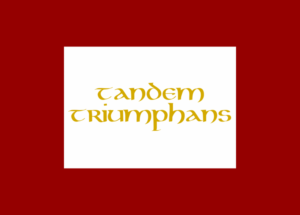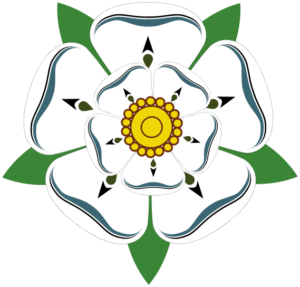Revolt of the Jacobites
After the Expulsion of James VII. (James II. of England) in the ‘Glorious Revolution’, his followers tried to persuade the Jacobites, named after Jacobus (latin name James), several times to bring him or his Son back to the Throne. However, this had far-reaching Consequences, which are still noticeable today through the Disarming Act and the Act’s of Proscription.
Composition
Although the Jacobites opposed the prescribed protestant Succession to the Throne, the Catholics were only one of the groupings. The majority of the Jacobites were even Protestant. Most of the Jacobites were a mix of scottish Patriots, economically Distressed, and Persons loyal to the Stuarts. James’ Supporters also came from different walks of Life, creating a certain dynamism while at the same time ensuring that various Military Actions were obstructed.
Rebellion of 1689
For the first time, the Jacobites arose under the Leadership of John Graham of Claverhouse (Bonnie Dundee), who in April 1689 hoisted the Flag of James on the Dundee Law -Dundee Law is the Core of an extinct Volcano in the center of the city.
In July, the Jacobite Government Forces defeated Killiecrankie in just 10 minutes, but Graham was killed by a stray Bullet. This meant that a few weeks later the Battle in Dunkeld was carried out without appropriate Leader and the Jacobites had to retreat to their native Areas.
After James himself failed in Ireland, the Rebellion had been crushed bloody. In the Aftermath, the english Government under William III. plans to gain Control of the Highlands, which ultimately led to the ‘Glencoe Massacre’.
The Fifteen
The first massive Jacobite Uprising
After an Invasion failed with french Support in 1708 and Georg I. from the House of Hanover in 1714 -as foreigner he was not very popular- took over the Throne, the time seemed ripe for a new attempt.
In the Name of James, John Erskine, Earl of Mar took over the Leadership of the Jacobites and in September 1715 raised the Standard for the first great Uprising in Braemar. Although Erskine had over 12,000 Men, he hesitated and failed to take the initiative, giving the English time to get their Troops in Position.
Under the Leadership of John Campbell, Duke of Argyll, the jacobite Force was intercepted by Sheriffmuir in November and a Battle ensued that ended in a draw. When James’ Son, James Francis Edward Stuart (The Old Pretender) landed in Peterhead in December, he tried in vain to strengthen the Highlander’s Morale, as the big scottish Cities were firmly attached to the british Government. In addition, Campbell moved forward with fresh Forces and won the outer north of Scotland for the Government, alternatively George I, while the Jacobites had to evade disorganized to Montrose. Since they did not receive any Support from France -the french Regent Philip, Duke of Orléans, tried to negotiate a Peace Agreement and Alliance with England- James fled with Erskine in February 1716.
The Atterbury Putsch
Under the Guidance of Francis Atterbury, Bishop of Rochester, a major Coup attempt was planned for the summer of 1722.
For the Conspiracy, which reached into the highest Circles, they got the military Support of France, Pope Clement as Sponsor and Spain. However, the Attempt was uncovered by british Prime Minister Robert Walpole at the last moment and arrested the relevant Parties. However, despite Torture and other illegal Arrests, Walpole only managed to Convict the jacobite Agent and Messenger Christopher Layer, who was cruelly tortured to Death.
In order to prevent new surveys of the Jacobites and to be able to better control Parts of the Highlands, the English built Forts. Additionally one tried to establish the english Language as well as Customs and Practices and to displace all scottish by Schools and church Facilities.
The Fourty-Five
The second massive Jacobite Uprising 1745

In July 1745, the Son of “Old Pretender” Charles Edward Stuart (Bonnie Prince Charlie) landed in Scotland with a few faithful, set his Standard at Glenfinnan and took Possession of the Inheritance of his Family.
His youthful Impetuity inspired the Jacobites and in September he was able to take over Edinburgh, but not the Fortress, with some 3,000 Highlanders from different Clans. The Troops, led by John Cope to retake, were defeated by the Highlanders in the Battle of Prestonpans, leaving Charles Castle in the Hands of Edinburgh Castle and Stirling Scotland.
But the Control of Scotland was not enough for him!

With his Army growing to 5,000 Men, Charles invaded England, hoping for more english and irish Jacobites, but the english side was more cautious. Nevertheless, he managed to take the Cities of Lancaster, Carlisle and Manchester in storming and was in December only 150 km (93.2 Miles) from London.
The rapid advance of the Jacobite Army made the City and King George II. in Panic and drove him, after a false Report on a Landing of 10,000 french Soldiers in hasty Flight Preparations.
Now Charles made a mistake.
Instead of advancing on London, he ordered at the urging of his Army Commander Lord Goerge Murray, the orderly Retreat. Murray seemed a Storming on London, far from the Supply Routes, too risky and wanted to collect the Forces in Scotland and know rested for the decisive Battle. Now the Government called George’s Son Wilhelm August, Duke of Cumberland back with battle-hardened Troops from the european Mainland and sent them the Scots after. Although the Jacobite Army defeated the british Troops in the Battle of Falkirk during their Retreat in January 1746, it was defeated in April at the Battle of Culloden, starving and exhausted. In just 25 minutes, the Clan Army was destroyed without Mercy, and William was hailed in England as a Savior, while in Scotland he was called a Butcher for his cruel Persecution of the Jacobites. Charles had to realize that another Resistance could not be formed and he must flee.
The Jacobites today
The Succession to the Throne is further challenged on a theoretical Level and remains theoretical, since the Claim of Elizabeth II. or her Grandson´s William and Harry, is not worse than that of the Jacobites. That is, as long as the current heirs of the Crown are not incapable of governing, the Succession remains in the House Mountbatten-Windsor (Windsor-Schleswig-Holstein-Sonderburg-Glücksburg).
Most aristocratic Houses and Britons assume that the Stuart Line has merged with the House Hanover, as it is extinct in Male Succession. In addition, in the ‘Act of Settlement’, which was never overturned, a catholic Succession was excluded.
Today’s Jacobites have a romantic Genealogy, and no Claim has been made since Charles Edward Stuart. Except for the Jacobites, after the Throne has become “free,” the eligible Successor will be determined by the leading Nobles of the House of Parliament, and a claim can therefore be considered extinguished. If there is no first-degree Heir (Son/Daughter), the Parliament determines the Succession of the Throne, which considers the jacobite Line as extinct. With the Death of Henry Benedict Stuart, Son of James VII, the House Stuart in Male Line is officially extinct. That the old Claims are pursued further depends more on the Wish of an Independent Scotland than on english Royalists. Accordingly, the modern Jacobites find themselves on the Internet as defenders of Scotland, rejecting the Act of Union of 1707 and viewing the United Kingdom as illegal.
Battles of the Jacobites
Battle at Prestonpans | Battle at Falkirk | Battle at Culloden